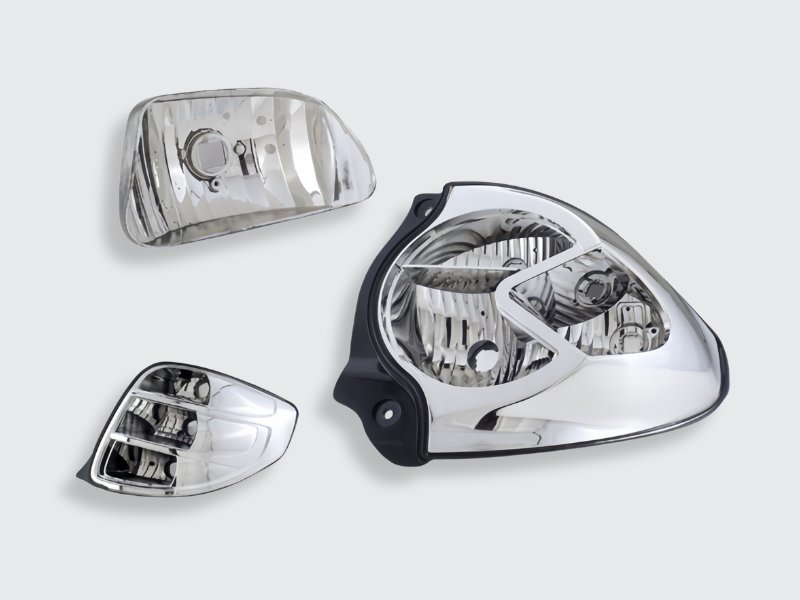
Vacuum metallization of plastics is a surface treatment technology, also known as physical vapor deposition (PVD), that deposits thin films of metal onto plastic surfaces in a vacuum environment. It can enhance the aesthetics, durability, and functionality of plastic parts.
The main process of plastic vacuum metallization
1. Cleaning and pre-treatment: The plastic substrate is thoroughly cleaned and pre-treated to eliminate contaminants, oils, and residues and ensure optimal adhesion of the metal layer.
2. Vacuum chamber: Place the plastic parts in the vacuum chamber, and then evacuate the vacuum chamber to create a low-pressure environment.
3. Metal deposition: A metal source (usually in the form of a tungsten filament or boat) is heated until it evaporates. The generated metal vapor spreads evenly within the vacuum chamber.
4. Condensation: Metal atoms condense onto the plastic substrate to form a thin metal layer. The thickness of this layer is precisely controlled and ranges from nanometers to micrometers.
5. Post-treatment: Post-treatment processes such as sealing or topcoating can be applied to enhance durability, corrosion resistance, or appearance.
Applications of plastic vacuum metallization
● Automotive industry: widely used in interior and exterior automotive parts to provide metallic finishes such as chrome decoration and logos.
● Consumer electronics: Applied to devices such as smartphones, laptops, and home appliances to enhance aesthetic appeal and perceived value.
● Cosmetic packaging: used for luxury packaging of perfumes, powders, and skin care products to enhance their visual appeal.
● Decorative and Architectural Applications: Used for decorative items, architectural elements, and signage due to its lightweight and cost-effective metal finish.
● Lighting: Applied to lamp housings, reflectors, and lamps to improve light distribution and efficiency.
We offer tungsten filament heaters, boats, electron beam crucible liners, electron gun filaments, high-purity aluminum wire, and other consumables for thermal evaporation and electron beam evaporation.
Post time: May-13-2024
